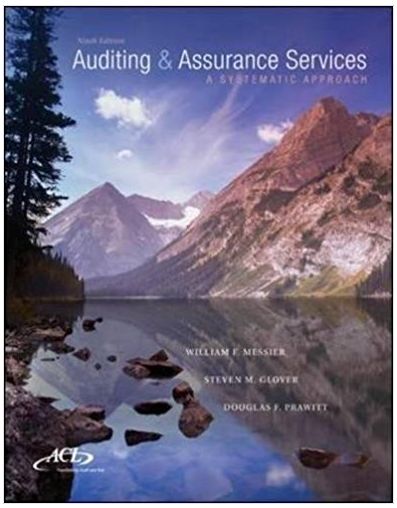Multiple Choice 1 Which of the following sampling methods would be used to estimate a numeric measurement
Question:
1 Which of the following sampling methods would be used to estimate a numeric measurement of a population, such as a dollar value?
a. Random sampling.
b. Numeric sampling.
c. Attribute sampling.
d. Variable sampling.
2. A number of factors influence the sample size for a substantive test of details of an account balance. All other factors being equal, which of the following would lead to a larger sample size?
a. Greater reliance on internal controls.
b. Greater reliance on analytical procedures.
c. Smaller expected frequency of misstatements.
d. Smaller amount of tolerable misstatement.
3 Which of the following sample planning factors would influence the sample size for a substantive test of details for a specific account?
-1.png)
4 The risk of incorrect acceptance relates to the
a. Effectiveness of the audit.
b. Efficiency of the audit.
c. Planning materiality.
d. Allowable risk of tolerable misstatement.
5 Which of the following statements concerning monetary- unit sampling is correct?
a. The sampling distribution should approximate the normal distribution.
b. Overstated units have a lower probability of sample selection than units that are understated.
c. The auditor controls the risk of incorrect acceptance by specifying the desired confidence level for the sampling plan.
d. The sampling interval is calculated by dividing the number of physical units in the population by the sample size.
6 How would increases in tolerable misstatement and assessed level of control risk affect the sample size in a substantive test of details?
-2.png)
7 An auditor is performing substantive procedures of pricing and extensions of perpetual inventory balances consisting of a large number of items. Past experience indicates that there may be numerous pricing and extension errors. Which of the following statistical sampling approaches is most appropriate?
a. Classical variables sampling.
b. Monetary- unit sampling.
c. Stop- n- go sampling.
d. Attribute sampling.
8 Which of the following statements concerning the auditor€™s use of statistical sampling is correct?
a. An auditor needs to estimate the dollar amount of the standard deviation of the population in order to use classical variables sampling.
b. An assumption of monetary- unit sampling is that the underlying accounting population is normally distributed.
c. A classical variables sample needs to be designed with special considerations to include negative balances in the sample.
d. The selection of zero balances usually does not require special sample design considerations when using monetary- unit sampling.
9. In classical variables sampling, which of the following must be known in order to estimate the appropriate sample size required to meet the auditor€™s needs in a given situation?
a. The qualitative aspects of misstatements.
b. The total dollar amount of the population.
c. The acceptable level of risk.
d. The estimated percentage of deviations in the population.
10. Which of the following would most likely be an advantage in using classical variables sampling rather than monetary- unit sampling?
a. An estimate of the standard deviation of the population€™s recorded amounts is not required.
b. The auditor rarely needs the assistance of a computer program to design an efficient sample.
c. Inclusion of zero and negative balances generally does not require special design considerations.
d. Any amount that is individually significant is automatically identified andselected.
The word "distribution" has several meanings in the financial world, most of them pertaining to the payment of assets from a fund, account, or individual security to an investor or beneficiary. Retirement account distributions are among the most...
Step by Step Answer:

Auditing and Assurance Services A Systematic Approach
ISBN: 978-1259162343
9th edition
Authors: William Messier, Steven Glover, Douglas Prawitt





